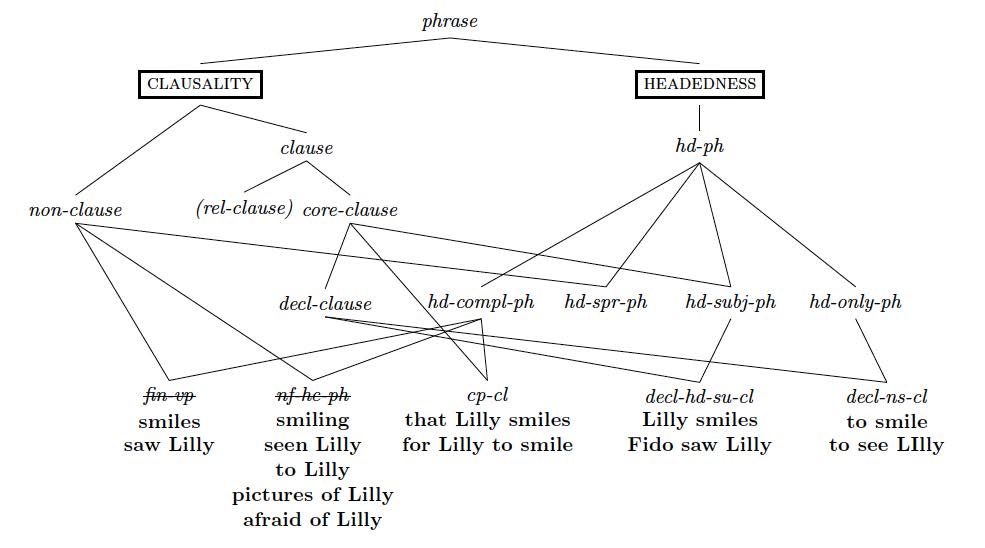Constraint-based Syntax 2: Week 5: Difference between revisions
Jump to navigation
Jump to search
No edit summary |
No edit summary |
||
| Line 2: | Line 2: | ||
<font size="3"> | <font size="3"> | ||
A Simplified Type Hierarchy for Phrases | == A Simplified Type Hierarchy for Phrases == | ||
[[File: ]] | The type hierarchy for phrases of GS is fairly complex. In particular, Head-Complement Phrases are divided into the 2 subtypes ''fin-vp'' and ''nf-hc-ph''. The motivation for this is that finite verb phrases in English have special properties with respect to negation and GS and Sag want to capture these properties in the definition of the type ''fin-vp''. The disadvantage of this approach is that the second subtype of ''hd-comp-ph'' becomes cumbersome to state, since it includes phrases headed by non-finite verbs and phrases headed by nouns, adjectives, prepositions, and complementizers. | ||
The online grammar avoids this complexity by eliminating the two types ''fin-vp'' and ''nf-hc-ph'': | |||
[[File:Phrase-hierarchy-of-online-grammar.jpg ]] | |||
Revision as of 06:49, 16 May 2017
A Simplified Type Hierarchy for Phrases
The type hierarchy for phrases of GS is fairly complex. In particular, Head-Complement Phrases are divided into the 2 subtypes fin-vp and nf-hc-ph. The motivation for this is that finite verb phrases in English have special properties with respect to negation and GS and Sag want to capture these properties in the definition of the type fin-vp. The disadvantage of this approach is that the second subtype of hd-comp-ph becomes cumbersome to state, since it includes phrases headed by non-finite verbs and phrases headed by nouns, adjectives, prepositions, and complementizers.
The online grammar avoids this complexity by eliminating the two types fin-vp and nf-hc-ph:
Navigation:
